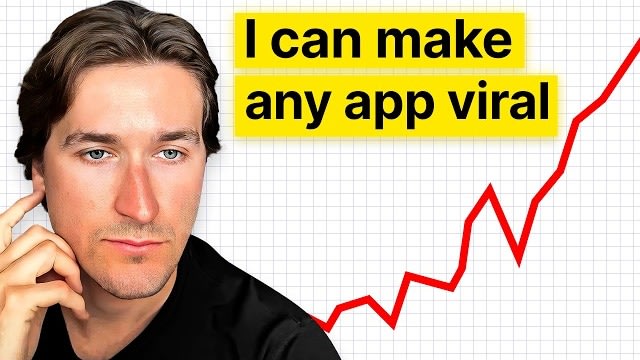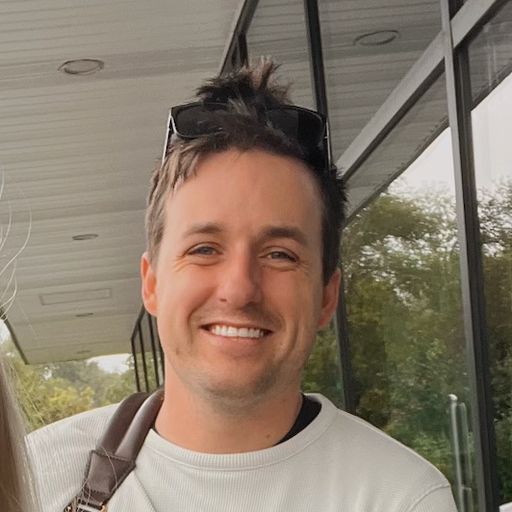Building viral apps isn't about getting lucky on TikTok. At least, that's not the whole story.
Hunter Isaacson (the guy behind NGL and Bag) recently shared what it actually takes to build consumer apps that don't just go viral, but stay viral. With over 150 million monthly active users on NGL alone, Hunter's built more successful apps than most developers dream of. Like others we've interviewed on our YouTube Channel, his approach is tactical, not magical.
Our host, Joseph, covered a ton of ground with Hunter. As always, if you haven't seen the interview yet, definitely check that out right here. For now, on to the recap:
The Instagram opportunity that changed everything and why timing matters
Hunter's breakthrough didn't come from reinventing the wheel. It came from watching Instagram closely. In October 2021, Instagram finally opened up link sharing to everyone. Before that, you needed 10,000+ followers to post links in stories. Basically, only influencers could do it.
The second Instagram made this change, Hunter and his friends jumped on a Halloween Zoom call with one mission: build the most viral thing possible on top of this new feature. Their idea? An anonymous messaging platform that lived on Instagram stories. They built NGL in about a month!
Then...six months followed of basically nobody using it.
"We thought everyone was going to do this. We thought this was going to be the number one thing people were going to build. So our focus was how do we build this as fast as possible. We built the app in about a month, but then it was like 6 months of nobody using it."
But here's where most people get it wrong: they expect immediate results. So, where did things massively change? From one TikTok video: a girl showing off an NGL message she received. It was something edgy and controversial that made people think "I need to download that."
That single video activated their first thousand users in one day. So, as always, you need patience. It's easy to see viral success stories and think, "Yeah, okay. They went viral." But they went viral only after months of building, waiting, and perhaps getting that one lucky break which can turn everything around.
Designing for human behavior, not features
What Hunter gets that most developers miss is that viral apps aren't about cool features. Virality usually comes from understanding what people actually do in groups. "I think knowing how human beings act when they're put in a group scenario, understanding group think, understanding why people do what they do," he explained. "When a person looks at a screen, what are they going to feel? And then how do those emotions dictate the action that we're requesting them to do."
That said, look at NGL's onboarding. It's brutally simple: copy link, share it, get your own messages. That's it. No complicated tutorials, no feature tours. It's basically 15–20 to seconds, which is all it takes to teach users and hopefully hook someone. To me, the genius is in what happens after. Even if they delete the app, they'll see their friends posting NGL links everywhere (bios, stories, etc). This creates what Hunter calls a "very high redownload rate."
The most successful apps combine simplicity with built-in virality. Users don't need to understand every feature. They just need to get value fast enough to share it with friends. This is fundamentally different from building feature-rich apps that require onboarding flows and tutorials.
After reading Hunter's story and recapping several others from our channel, one thing I'm seeing is this: Simple wins because simple spreads.
The economics of viral apps and how small percentages add up
Here's where it gets interesting for subscription app builders: NGL generates multi-8 figure annual revenue, but only a tiny percentage of users actually pay. Their monetization strategy is simple: weekly subscriptions priced by country based on GDP per capita. That ranges anywhere from $1 to $7. It's designed to be a "low impulse buy" that doesn't scare anyone away.
"A very small percentage of our downloads actually monetize. It's primarily used as a free product. But because of the volume of users, we've been able to generate significant revenue just by taking a very small percentage of those users and moving them to paid."
This is the sweet spot most consumer social apps miss. You're not competing with Instagram or Facebook, what you're really doing is trying to augment them. When you build on top of existing platforms, you inherit their distribution graph. Users don't leave their main app. They just get more value from it. And that's exactly where the opportunity lives for apps like NGL.
The share menu opportunity and other hidden distribution channels
One overlooked angle: Instagram's share menu. Some apps have already realized the value here, like cooking apps. They allow people scrolling through cooking videos to tap share, and have the app automatically extracts ingredients. That's distribution baked into behavior. It takes a few taps to get an app into the iOS share menu, but once it's there, it's prime real estate.
Hunter mentioned advising Faves, which used this exact strategy to save Instagram videos before deletion. "If users understand the value of the product, then you can put a multi-step tutorial in front of them and they'll still do it." The friction doesn't matter if the value is clear enough. That's the key insight most developers miss when they obsess over reducing every tap.
Hunter also sees massive opportunity in iOS Safari extensions. Those are hidden but powerful distribution channels. One example he mentioned: a credit card recommendation engine making $500 per referral. Crypto gaming is another space with huge demand, but no one has quite packaged it right yet. The landscape is shifting constantly, and the founders who pay attention to platform changes catch windows that others miss entirely.
Wrapping up
Hunter's success isn't about one big idea. It's about three fundamentals: platform arbitrage works, distribution beats differentiation, and simple wins. When a platform changes features (like Instagram opening links), there's a brief window to build on it. A mediocre app with great distribution beats a great app with poor distribution. And viral apps have ridiculously simple onboarding, and NGL's success is proof.
As always, if you're ready to test your paywall, run price tests and more for your app, then you're already in the right spot. Sign up for a free Superwall account today!

